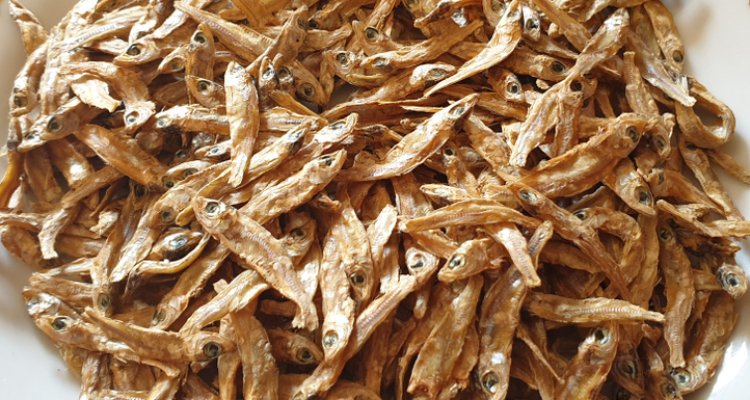
Showcase
Catching small fish enlarges food security in Africa
A dagaa stew or deep-fried kapenta: dried small fish species form an increasingly important part of Africans’ diets. Fish is full of important nutrients such as proteins, vitamins, zinc and iron. Yet local authorities pay very little attention to the harvesting, processing and trade of small fish, so that much of this source of food goes unused. The Aquaculture and Fisheries chair group of Wageningen University & Research wants to change this.
Of all food production systems, fishing is the most energy-efficient and has the lowest environmental impact in terms of greenhouse gases and the use of fresh water and pesticides. Fish is also by far the largest source of harvestable protein and contains many micronutrients such as vitamins B12, D and A, omega 3 fatty acids, zinc and iron. “African fishers are increasingly targeting small fish species. Very small fish species often yield large catches and can withstand fishing pressure well, so that harvesting these species will not quickly threaten the survival of the population,” says fisheries biologist Paul van Zwieten. “However, local authorities still pay little attention to the importance of harvesting small fish for food security, so that the advantages of this food source are not yet being sufficiently reaped.”
Dagaa from Lake Victoria
Fishery biologists of the Aquaculture and Fisheries chair group will cooperate with researchers from Germany, Austria, Ghana, Kenya, Uganda and Tanzania to find out how much fish is caught and where the fish is consumed after it has been dried in the sun. In the Small Fish and Food Security project, they will use surveys to find out where the fish go. “Lake Victoria is the world’s largest freshwater fishery. Fishers go out at night and catch dagaa by luring them with lights. They catch around 450 to 550 thousand tonnes annually,” says Paul van Zwieten. “Just to give an idea: hypothetically, this catch could supply 25 grams of dried fish weekly to all 144 million inhabitants of Kenya, Uganda and Tanzania; and it could even be much bigger.”
Drying fish
After the fish are harvested, women dry the fish in the sun on the edge of the lake. Local and regional merchants then transport the fish by bicycle, motorbike or van to markets in cities all over Africa. For example, you can buy dagaa in Juba in South Sudan, or purchase pygmy herring from Lake Volta, with a maximum length of 3 cm, in the streets of Tamale in Ghana. “Some fish sellers also offer packets of salted, dried or fried fish as snacks, and hospital staff enrich porridge served in hospitals with fish powder,” says Van Zwieten.
Drying the fish in the sun is the most environmentally friendly processing technology available. Yet, according to van Zwieten, this processing phase has a major bottleneck. “The fish are usually dried directly on the shores of the lake,” he says. “But rainy seasons, overheating and contamination with sand and soil are bad for the quality of the catch. After a rain shower, the women dry the fish anew, but it is then unfit for human consumption and so it is used for animal feed. Some 60 to 70 per cent of dagaa caught in Lake Victoria is used as fodder.”
Strengthening women's investment capacity
According to the researchers, there are techniques available for improving the drying process, however governments first need to improve the investment capacity of women. “For example, with small loans they could buy racks on which to dry the fish, so that it stays clean and the quality of the product is improved. Strengthening women’s investment capacity is also good for the health of their families, because they eat the fish too.”
The fisheries biologists find it remarkable that harvesting small fish is barely mentioned in national policy documents. “Our research reveals how important small fish species are in the diets of many Africans. Local authorities should learn from this and invest more in small fish harvesting and processing to improve local food security.”